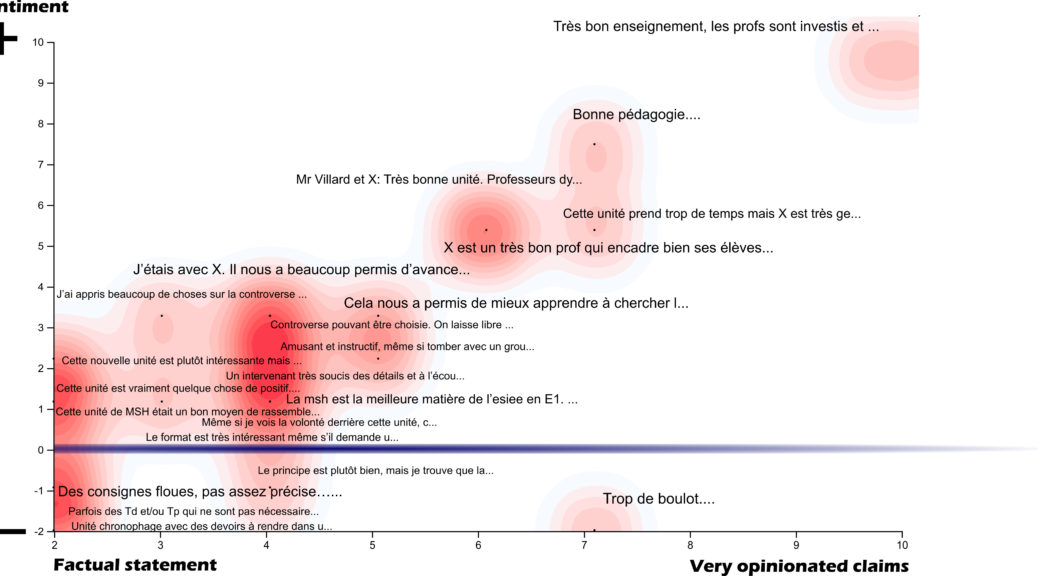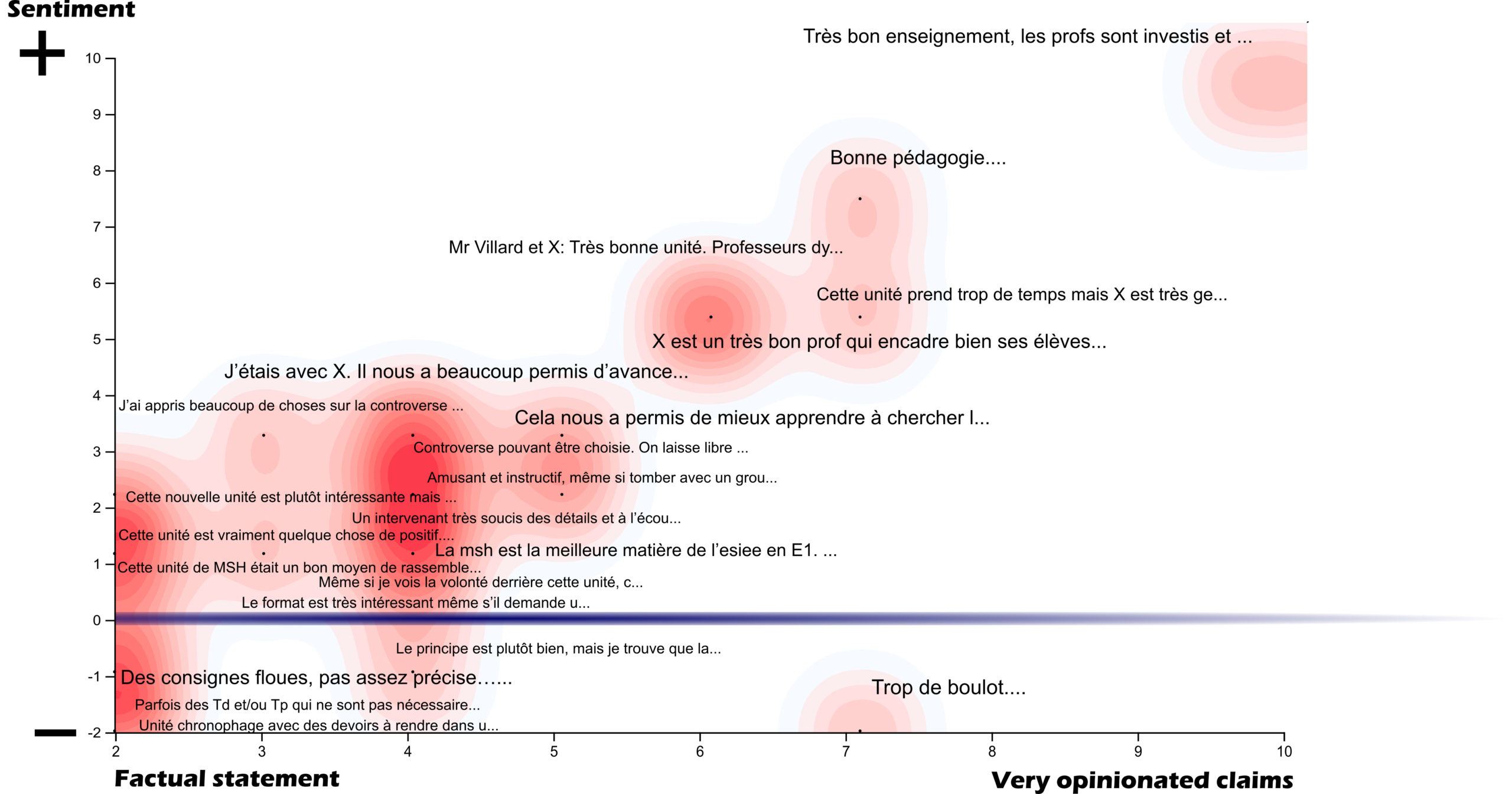Sentiment analysis is “the process of computationally identifying and categorizing opinions expressed in a piece of text, especially in order to determine whether the writer’s attitude towards a particular topic, product, etc. is positive, negative, or neutral.”
Oxford Dictionary
Methods to perform sentiment analysis
CorText Manager offers two different ways to perform sentiment analysis.
Textblob
Textblob is a python library (Textblob Documentation) computing sentiment score for a textual snippet as well as its degree of subjectivity. Sentiment varies from -10 (very negative) to 10 (very positive). Subjectivity is 0 for factual statement and 10 for very opinionated claims.
Google API
Google Natural Language API (Analyzing Sentiment) enables a user to measure the sentiment polarity and magnitude of a text . A normalized version of magnitude is also computed. Polarity spreads from -10 to +10. Magnitude from 0 to 10 (only integer values). Google API is limited to 1000 results only.
Supported languages
The results are stored in the database for further analysis. Sentiment analysis works in English and French, Danish, italian (only Textblob is allowed for these cases).
Italian language is also being tested. Only polarity score is issued (no subjectivity scoring).
Parameters
Additionally, it is possible to appraise the quality of this scoring reading texts and their sentiments in a dedicated corpus explorer interface.

Textual Field
Field you wish to analyse
Language
Language used in the text
Method
Choose the method (see above)
Example of usage
(Textblob sentiment analysis on CorText Manager | Contour Plot Dispersion with Raw graphs | Inkscape)
Comments from students on a course at the end of a semester


